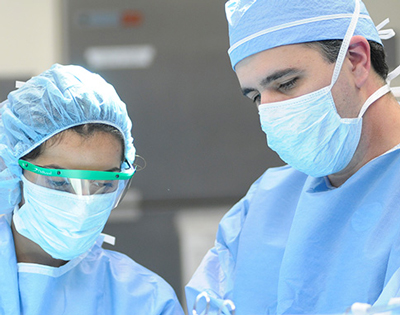What Is Incontinence?

Millions of women experience involuntary loss of urine, called urinary incontinence. Some women may lose a few drops of urine while running or coughing. Others may feel a strong, sudden urge to urinate just before losing a large amount of urine. Many women experience both symptoms. Incontinence can be slightly bothersome or totally debilitating. It keeps some women from enjoying many activities with their families and friends. Urine loss also can occur during sexual activity, causing tremendous emotional distress.
Women experience urinary incontinence twice as often as men due to pregnancy and childbirth, menopause and the structure of the female urinary tract. But both women and men can become incontinent from neurologic injury, birth defects, stroke, multiple sclerosis and physical problems associated with aging.
Incontinence occurs because of problems with muscles and nerves that help to hold or release urine. The body stores urine in the bladder, a balloon-like organ. The bladder connects to the urethra, the tube through which urine leaves the body. During urination, muscles in the wall of the bladder contract, forcing urine out of the bladder and into the urethra. At the same time, sphincter muscles surrounding the urethra relax, letting urine pass out of the body. Incontinence will occur if the bladder muscles suddenly contract or the sphincter muscles are not strong enough to hold back urine. Urine may escape with less pressure than usual if the muscles are damaged, causing a change in the position of the bladder.
Types of incontinence
The most common forms of incontinence are:
Stress Incontinence
This form of incontinence in women is caused by coughing, laughing, sneezing or other movements that put pressure on the bladder and cause urine to leak. Physical changes resulting from pregnancy, childbirth and menopause often cause stress incontinence. Stress incontinence is readily treatable.
Urge Incontinence
This form of incontinence, also called overactive bladder, causes people to feel a sudden need or urge to urinate, or to lose urine for no apparent reason. Involuntary bladder contractions cause the bladder to empty on its own during sleep or after drinking even a small amount of water. Usually urge incontinence is accompanied by frequent urination and the need to get up in the middle of the night. A variety of effective medical and surgical treatments are available for urge incontinence.
Medical & Non-Surgical Treatments

Chronic incontinence can originate from a variety of circumstances. The nature and mix of therapeutic measures are tailored to the individual patient.
Exercises — Exercises to strengthen or retrain pelvic floor muscles and sphincter muscles can reduce urinary leakage.
Electrical stimulation — Brief doses of electrical stimulation can strengthen muscles in the lower pelvis in a way similar to exercising the muscles. This will stabilize overactive muscles and stimulate contraction of urethral muscles.
Biofeedback — Using electronic devices or diaries to track when bladder and urethral muscles contract can help patients achieve control of these muscles. Biofeedback can be combined with pelvic muscle exercises and electrical stimulation (see more below) to relieve stress and urge incontinence.
Combined stimulation and biofeedback therapy — Patients use a custom-fit device at home that utilizes stimulation to strengthen pelvic floor muscles and inhibit overactive bladder muscles, while giving visual biofeedback and audible guidance. Precise adjustments can be made to ensure effective muscle training (available through the Center for Specialized Women’s Health.)
Timed voiding or bladder training — Timed voiding and bladder training are techniques that use biofeedback. By keeping track of voiding and leaking, patients’ bladders can be emptied before leaking. Biofeedback and muscle conditioning — known as bladder training — can alter the bladder’s schedule for storing and emptying urine.
Medications — Medications can reduce many types of leakage. Some drugs inhibit contractions of an overactive bladder. Others relax muscles, leading to more complete bladder emptying during urination. Some drugs tighten muscles at the bladder neck and uriethra, preventing leakage. And some, especially hormones such as estrogen, are believed to help muscles involved in urination to function normally.
Injections — Botox® injections are an option for people with overactive bladder syndrome. Botox is injected into the detrusor muscle, paralyzing the overactive muscles. The treatment is approved for use in individuals with multiple sclerosis and spinal cord injuries. This is also an option for women who have not had success with medicinal treatments or those with idiopathic incontinence (of unknown cause).
Pessaries — A pessary is a firm but flexible ring inserted to press against the wall of the vagina and the nearby urethra. It helps reposition the urethra and vagina, leading to less stress leakage and relief of pelvic organ prolapse symptoms.
Implants — Implants are substances injected into tissues around the urethra. The implant adds bulk and helps to close the urethra to reduce stress incontinence. Injections may need to be repeated periodically to maintain benefit and effectiveness. Implants can be injected by a doctor in about 10 minutes using local anesthesia. They can usually be completed in the office in about 10 minutes or less.
Implants have a partial success rate. Injections must be repeated after a time because the body slowly eliminates the substances.
Surgical Treatments
Many surgical options for incontinence have a high rate of success. Surgical therapy for stress incontinence has improved considerably and can now be performed as an outpatient procedure in most cases, without a catheter postoperatively, and with minimal pain and discomfort. Depending on the cause of incontinence, surgeons may use a vaginal, laparoscopic or open approach.
A vaginal sling, the most commonly performed surgery, can create a hammock of support to prevent stress urinary incontinence. The procedure, which involves placing a piece of synthetic mesh or tissue under the urethra, is done almost entirely through the vagina. A small incision is necessary just above the hairline or in the thigh creases for placement of some sutures or the mesh. Cleveland Clinic pelvic floor surgeons offer retropubic, transobturator, and single-incision midurethral slings for various types of incontinence.
A laparoscopic “bladder neck suspension” procedure alleviates pressure on the urethra by lifting tissue adjacent to the bladder. The entire procedure requires only a small incision at the umbilicus (belly button), and at several other locations, resulting in barely visible scars.
Most patients undergoing incontinence procedures alone return to normal activities in one to two weeks.
Both urogynecologists and urologists who focus on female patients are specially trained to diagnose and treat these conditions.
What is Pelvic Organ Prolapse?

Pelvic organ prolapse is a very common condition, affecting roughly half of women who have had children by vaginal delivery. It occurs when one or more of the organs in the pelvis (bladder, uterus, rectum, small or large bowel) drops down due to a weakened or stretched pelvic floor muscle and/or loss of vaginal support. This downward descent may result in protrusion of the vagina, uterus or both.
In addition to vaginal childbirth, prolapse development can be attributed to several factors, including advancing age and obesity. Hysterectomy, chronic straining, and abnormalities of connective tissue or connective-tissue repair predispose some women to disruption, stretching or dysfunction of the connective-tissue attachments of the vagina, resulting in prolapse.
Symptoms of pelvic organ prolapse
Depending on which organs are involved in the prolapse,
different symptoms may occur. Below is a list of some
common symptoms:
- Urinary incontinence, frequency and/or urgency
- Weak or prolonged urinary stream
- Feeling of incomplete emptying
- Needing to change position to start or complete voiding
- Urgency to defecate
- Straining during defecation
- Incontinence of flatus, or liquid or solid stool
- Sensation of or seeing a bulge or protrusion in the vagina
- A sense of pressure or heaviness in the vagina
- Painful sexual intercourse
Pelvic Organ Prolapse Treatments

Reconstructive Surgery
Reconstructive surgery for prolapse aims to correct the prolapsed vagina while maintaining (or improving) vaginal sexual function and relieving any associated pelvic symptoms. For those patients who do require surgery, we offer laparoscopic and robotic-assisted techniques that often result in quick recovery times. Many surgeries for prolapse are conducted vaginally, leaving no scars. Laparoscopy, with or without robotic-assistance, is being increasingly sought after as a minimally invasive method for repairing more severe prolapse to quicken recovery compared with major surgery. Cleveland Clinic has pioneered laparoscopic and robotic approaches to vaginal prolapse surgery.
An alternative to reconstructive surgery is obliterative surgery, which closes off the vaginal canal either partially or totally. This procedure is typically reserved for women who are elderly, medically compromised, and no longer sexually active.
Vaginal mesh
The use of vaginal mesh is the latest development in treatment for pelvic organ prolapse. Cleveland Clinic staff use this method cautiously, as it remains under study to determine whether it is a safe and effective option.
Several minimally invasive treatments using mesh are currently offered in the United States. For women who have more than one organ prolapse at a time, severe pelvic organ prolapse, or a previously unsuccessful prolapse surgery, the surgeon may use graft materials (supportive mesh) to repair a bladder bulge or hernia into the vagina (cystocele), intestinal bulges (enterocele) and rectal bulges (rectocele) during the same procedure, if necessary.
These mesh procedures are designed to restore normal vaginal anatomy, while providing strong and lasting support of the pelvic organs.
The FDA recently reviewed the use of mesh in the vagina and they were most concerned with mesh for vaginal prolapse (dropped or herniated bladder, rectum and/or uterus) more so than slings. While slings in this area use a small amount of mesh, the FDA has categorized slings differently and feels that their benefit outweighs the complication profile from this small amount of mesh.
Both urogynecologists and urologists who focus on female patients are specially trained to diagnose and treat these conditions.
Appointments & Locations
Ready to schedule an appointment?
To schedule an appointment, call 216.444.CARE (2273). Same-day appointments are available.
MyConsult® Online Medical Second Opinion
MyConsult Online Second Opinion program connects patients to the expertise of top Cleveland Clinic specialists without the time and expense of travel. Through our secure web platform, patients can submit their detailed health information, medical records and diagnostic test results. The most appropriate Cleveland Clinic expert is assigned to the consultation and will render a detailed second opinion. The report includes commentary about the diagnosis and treatment options or alternatives and recommendations regarding future therapeutic considerations. Patients are also able to send additional questions to the physician who provided the report. Online medical second opinions are available for more than 1,200 medical diagnoses.
Locations
Why Choose Us?
Cleveland Clinic specialists in the Glickman Urological & Kidney Institute and Women’s Health Institute explore all available prolapse and incontinence treatment options to ensure that our patients experience a successful outcome.
Resources
Stay Connected
- Explore our services, locations and more
- Subscribe to Health Essentials e-News for expert insights on nutrition, health and wellness. Get free guides to common conditions, too
- Find a wealth of family health & wellness tips
- All About Pelvic Floor Disorders - with Sarah Vogler, MD on Cleveland Clinic's Butts & Guts Podcast
- YouTube